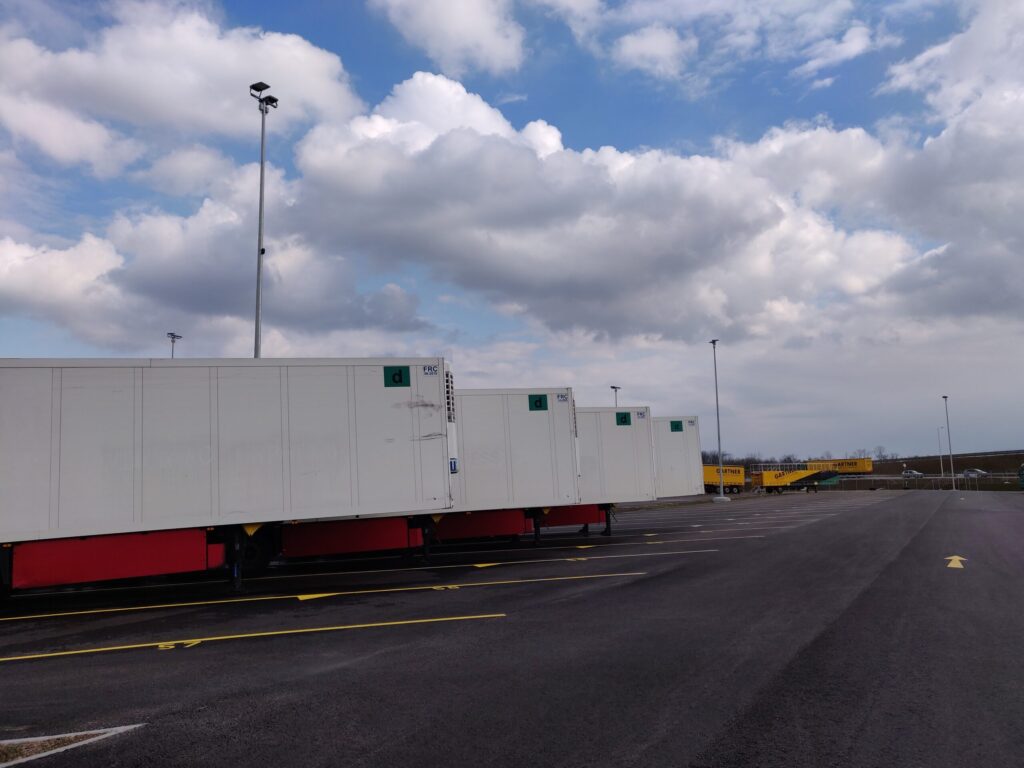Initial Situation
In car parks next to motorways or in car parks of logistics and industrial companies, there is little movement during the night hours. Nevertheless, these usually very large facilities are illuminated with high-power (LED) floodlights. The light poles are relatively high and their arrangement is usually very central on the parking area.
Due to these circumstances, there are large scattering losses of the lighting. This leads to a waste of energy and subsequently to unnecessary costs.Switching off the lighting is nevertheless not an option. Due to the safety aspect, there must be sufficient light when there is movement in the car park.
Situation Approach
By illuminating the car park on demand, the area is only brightly lit when it is necessary. Starting from a low basic illumination of the LED floodlights of 10%, a detection of moving trucks leads to an increase of the light output to a standard-compliant level. Only the area where a truck is currently driving is illuminated. After a certain hold time, the brightness of the LED floodlights is lowered again to the basic illumination level.
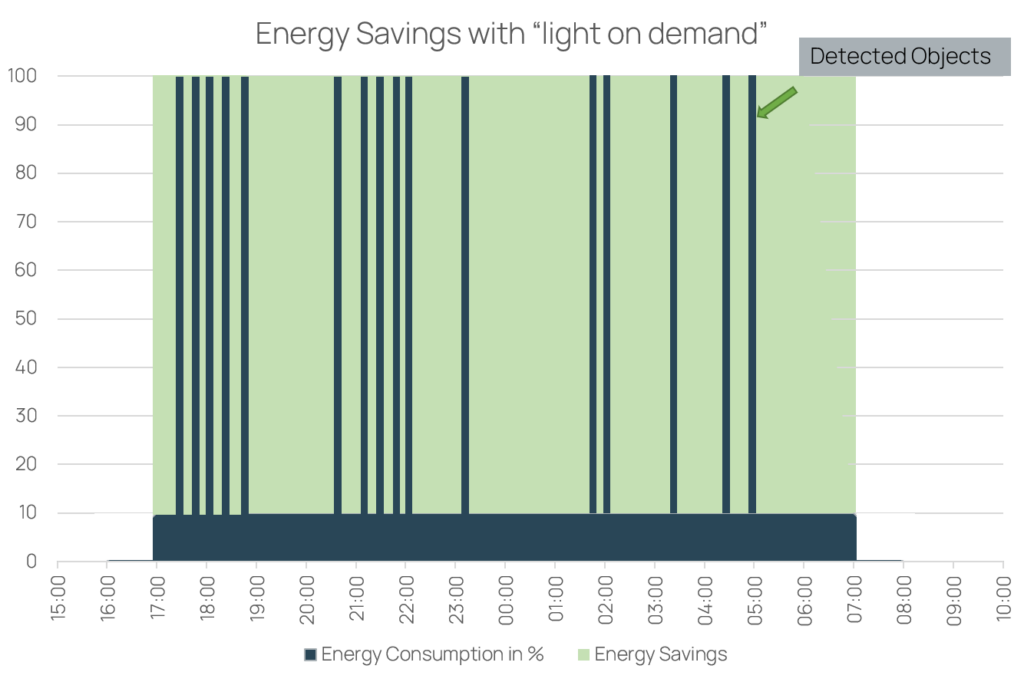
Technical Realization
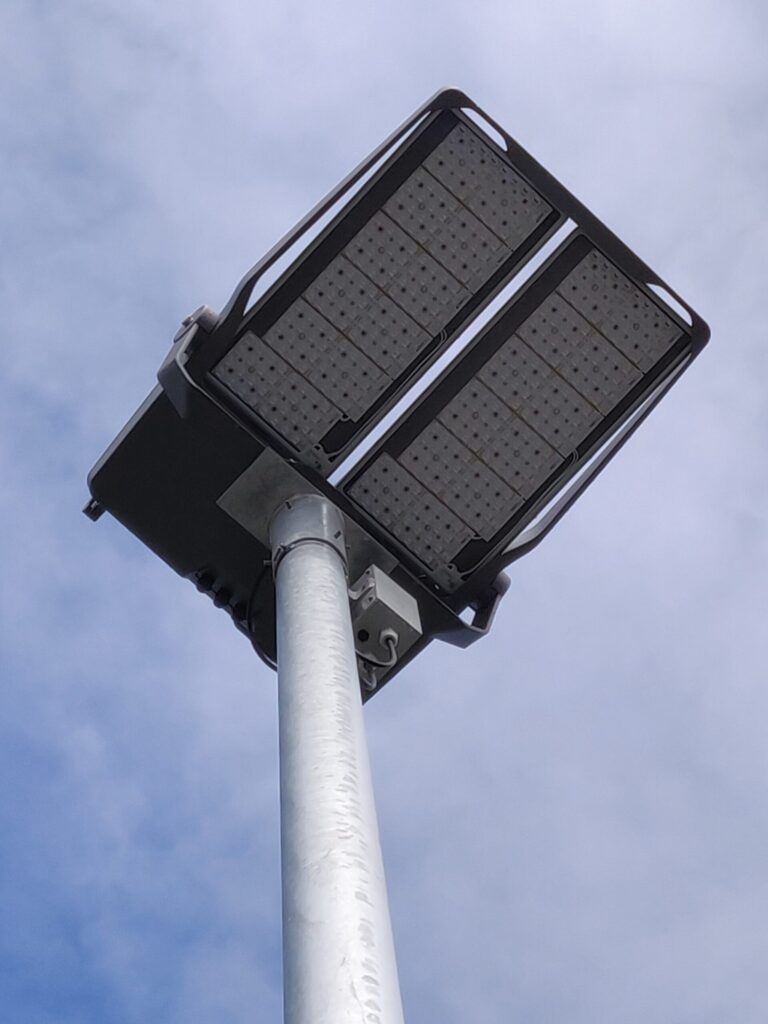
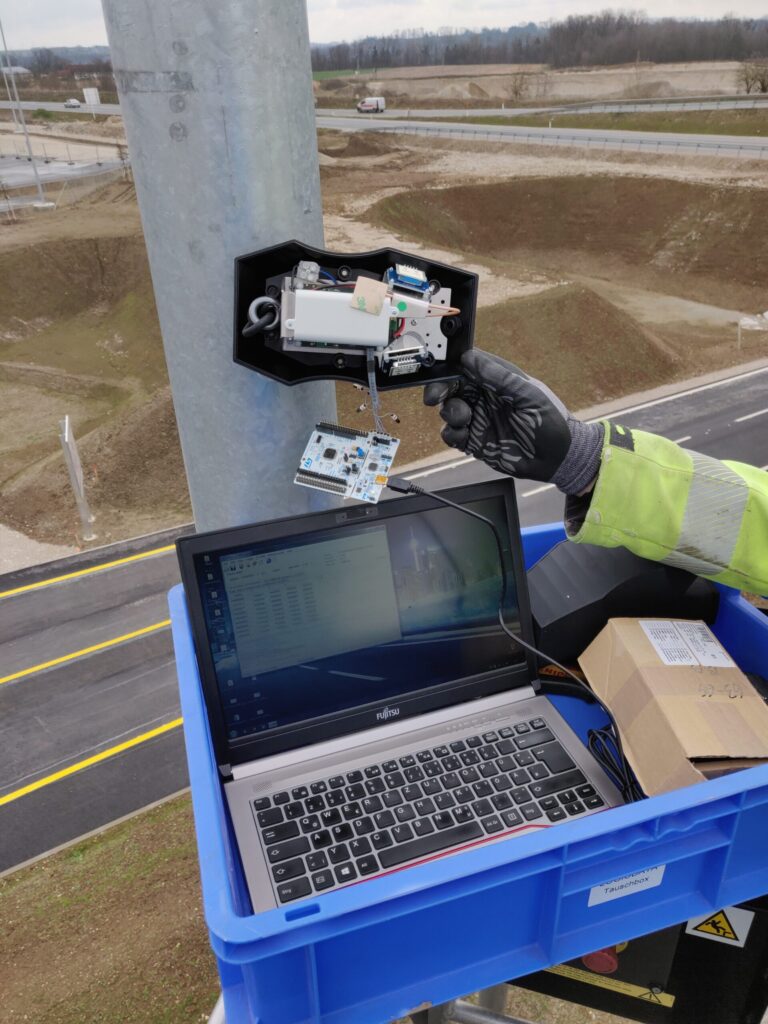
In the car park, 100 LED floodlights are installed at a height of 15 m with an average connected load of 470 W, which illuminate the individual tramlines. Each LED floodlight has its own esave SLC-AC control module for wireless control. 36 lix.detect SLC radar sensors are installed across the entire site, mounted on the masts at a height of 10 m. These sensors control several LED floodlights at a time. These control several LED floodlights in their vicinity. When motion is detected, the lighting is increased in the tramline or in certain areas.
The project was planned and implemented by eww Anlagentechnik GmbH.
Installation
Configuration
Radar Technology in the car park?
The Siteco LED floodlights were newly purchased for this project. During procurement, care was taken to ensure that as little work as possible was involved in
mounting the luminaires on the mast and that the radio modules were already integrated.
The luminaires are configured via the esave sIConfigurator. Parameters such as the basic lighting, the lighting level in the event of motion detection and the hold time of the lighting can be set via this. In addition, an esave slControl gateway was installed in the area of the system, which enable s remoteaccess to the system via the cloud.
Advantages of radar compared to PIR (Passive Infrared Sensor) are the independence from the outside temperature and a low rate of false triggering due to other digital signals. The range for the detection of trucks is approximately 100 metres.
Energy Calculator
Assuming an electricity price of € 0.25 / kWh for the 100 light points with 470 watts, this results in electricity costs of approximately € 49,000.00 per year without dimming. With a “low” tripping rate and low basic lighting of 10 % of the light output, up to € 39,000.00 can be saved.
But the ecological aspect is also considerable, with a saving of over 20 tons of CO². Not to forget the significantly reduced light pollution around the car park.
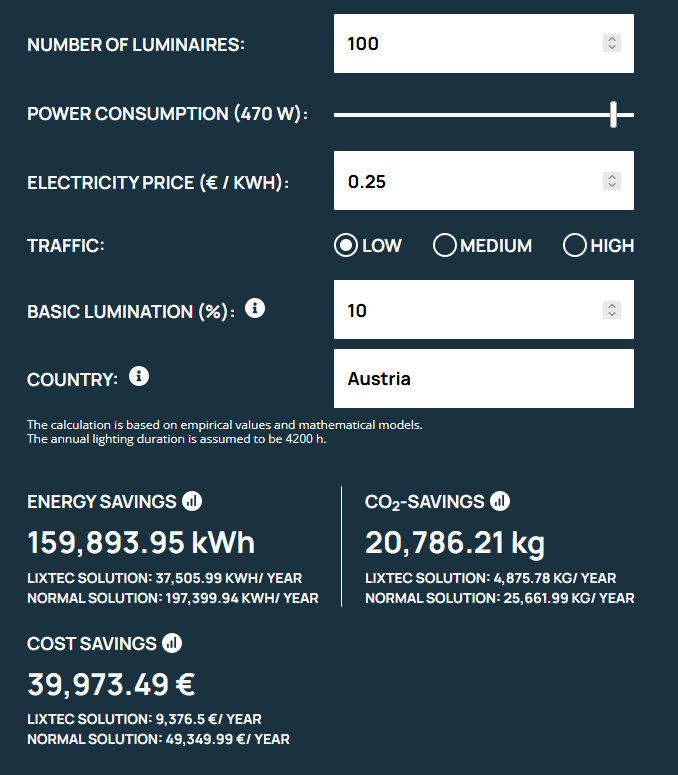
Conclusion
Through intelligent planning and the use of new technologies, it was possible to implement the lighting of a truck parking area in a “smart” and demand-oriented way. The courage to use new technologies was rewarded. This can be clearly shown by correlating the additional expenditure with the savings made.
